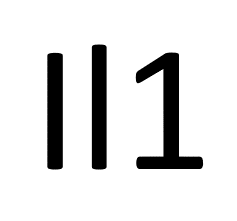Estimated reading time: 1 minute
This resource was published in 2023. The data may be out of date.
Years ago, my Roman Civilizations professor began the course by having people shout out things from the Romans that we still use today. Students called out things like cement, roads, and the [Julian] calendar. After a while, he told us to think smaller. No matter what we said, it wasn’t small enough. Smaller, smaller, smaller.
So, what’s the very small thing we can thank the Romans for? Our alphabet.
If you’re reading this, you probably use the same alphabet as me – the Roman alphabet. But what you probably don’t use is the same font.
When we were working out our new brand, we knew we wanted a new font. We wanted an accessible font. When I went looking for one, what I didn’t bargain for was how many fonts would fail a simple accessibility test.
Note: While we strive to make our content as accessible as possible and we regularly test our website to make sure it is WCAG AA or AAA compliant, we know we aren’t perfect. If you have any suggestions on how we can be more accessible, please send them to digital@mentalhealthcommission.ca.
Even if you are unfamiliar with the accessibility test, you’ve probably seen text where the capital ‘I’ looks identical to a lower case ‘l’.
Add one more symbol, and you’ve got the test. It’s called the I – l – 1 test.
I – l – who?
This test is exactly as simple as it sounds. Go ahead and test the default font in your texts or email. Type an upper-case I (eye), a lower-case L (el), and the number 1 (one).
Do they look suspiciously similar? Maybe like this:

Yeah.
You might be thinking that you can still tell the I and the l apart. And if you can, that’s great. But for people with visual disabilities, it isn’t so easy.
And let’s say that you are reading content from an organization that uses a term like … oh, let’s just choose one at random … “mental illness” a lot, that I-l confusion can be a real sticking point.
For accessibility, think smaller
The connection between visual and learning disabilities and mental health is closer than you think. In our own research, we’ve found that 25-50% of individuals living with chronic disease will experience depression.
According to the Canadian National Institute for the Blind, an estimated 1.5 Million Canadians identify themselves as having sight loss. In a 2021 CDC study, it was reported that 1 in 4 adults with vision loss reported anxiety or depression.
According to the International Dyslexia Association, 15-20% of the population has a language-based learning disability. Dyslexia is the most common cause of reading, writing, and spelling difficulties. It’s also associated with anxiety and depression.
Given these numbers, it’s pretty much guaranteed that some people interested in mental health and mental illness also have visual or learning disabilities. In both cases, an accessible font can make it easier to process information. It’s only one part of how we make content accessible, and it’s a small one, but it turns out that it’s an awfully important one, too.





